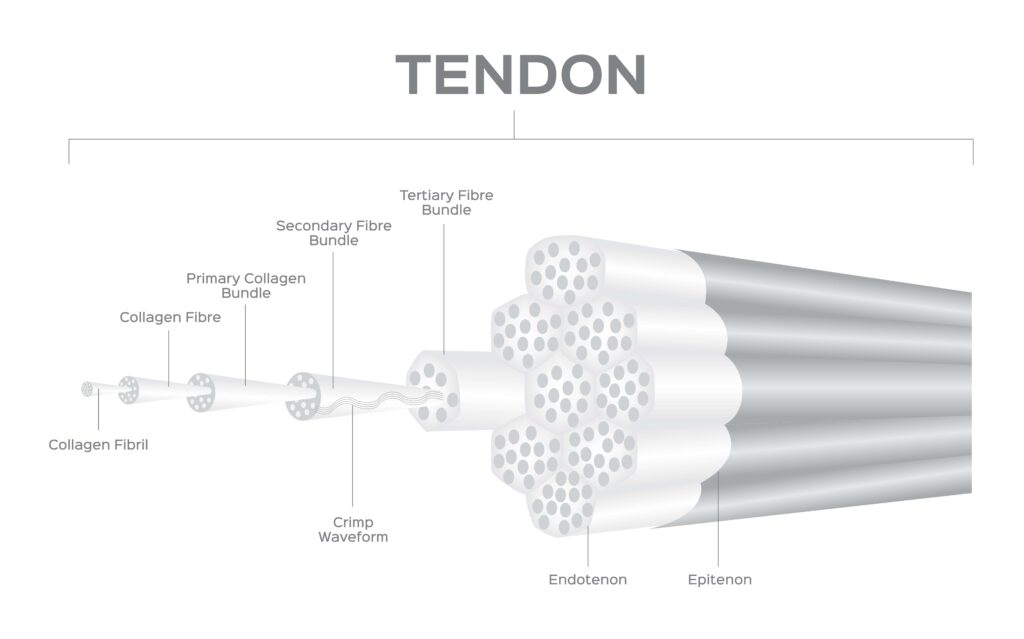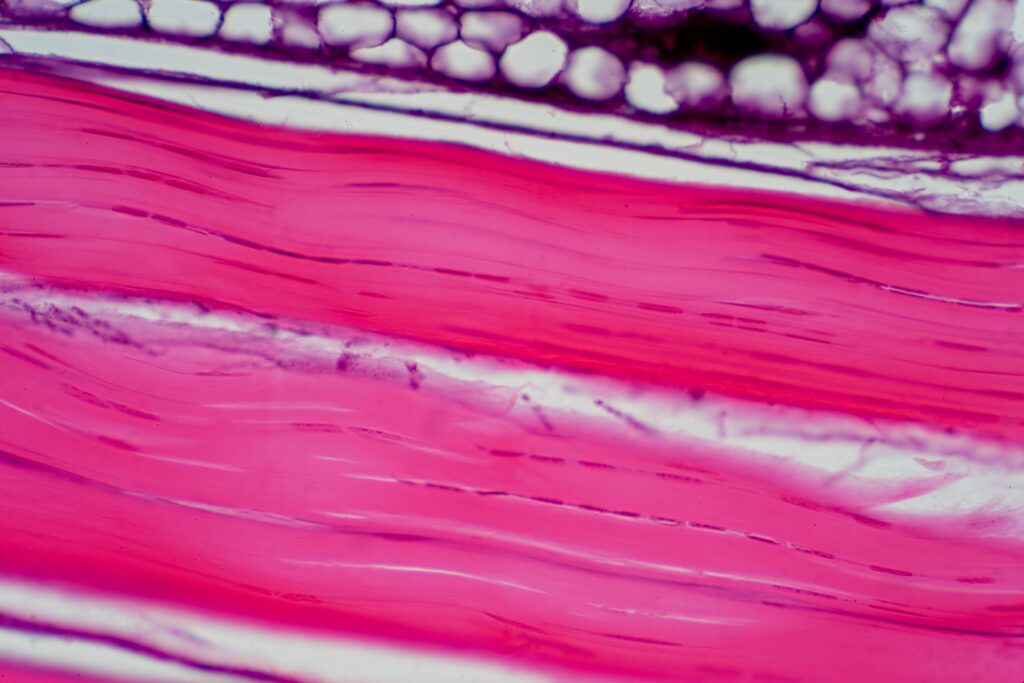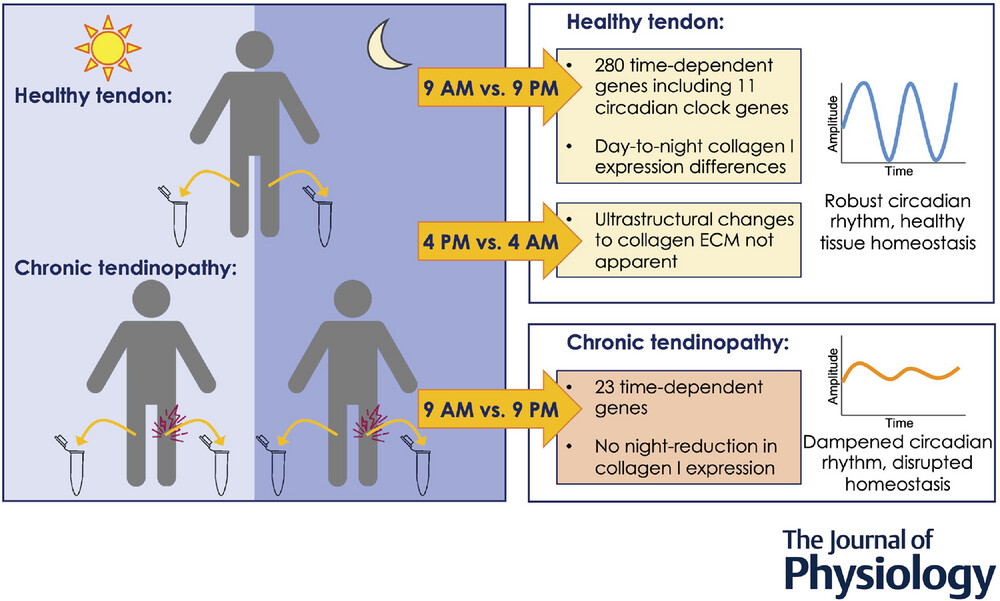
Chloé Yeung,
Institute of Sports Medicine at Copenhagen University Hospital, Denmark
Center for Healthy Aging, University of Copenhagen, Denmark
Our circadian rhythm, how our body responds to the 24hr light and dark cycle, could not only maintain the health of our tendons, but could be used to inform diagnosis and treatment of tendon pain and injury. Chloé Yeung, Senior Researcher at the Institute of Sports Medicine Copenhagen, Bispebjerg Hospital in Denmark, is curious about the link between the circadian rhythm and tendon health. Her research, published in The Journal of Physiology, was the first study to show that a disrupted circadian rhythm upsets the tendons in humans. She discusses the findings and how the evidence could lead to new therapies for treating tendon injuries.
Tendons: strong but vulnerable to injury
Tendons are the fibrous connective tissues that link muscles to bones. They play a crucial role in facilitating bodily movements, like walking, running and jumping, and more intricate daily tasks, like buttoning shirts and using cutlery.
Tendons are strong because they are made mostly of an extracellular matrix protein called type I collagen that are uniquely organised into fibrils arranged in parallel arrays, much like dried spaghetti inside a packet. Unfortunately, tendons are prone to injury, most commonly overuse injuries from repeated movements, which are referred to as “tendinopathies”. They are believed to be caused by gradual build-up of collagen damage.

Due to the slow renewal of tendon collagen and its high level of organisation, it takes a very long time to repair the damage. Even after the tissue is repaired, the original architecture is never truly restored. The tissue can also swell, leading to pain and stiffness, typically in the shoulders, elbows, knees and Achilles. Tendon injuries rank as the second most prevalent orthopaedic condition after osteoarthritis, contributing significantly to healthcare costs. For example, in the UK approximately 150,000 people every year seek treatment for Achilles tendinopathy (NICE, 2020).

Circadian clock genes maintain healthy tissues
The circadian clock is an evolutionarily conserved system that humans and animals have developed to coordinate our physiology and behaviour to the environment. It helps our bodies to anticipate and prepare for, rather than just adapt to, the changes that occur in a 24-hour day.
Tissues with an internal 24-hour rhythm are known as peripheral clocks, where the circadian rhythm’s role is to maintain tissues. In 2014, we discovered a circadian rhythm in mouse tendons. Our study revealed that tendons from “clockless” mice (those with a mutation in the Clock gene) had a build-up of calcium deposits on the tissue resembling calcific tendinopathy (the build-up of calcium deposits in the rotator cuff tendons) in the shoulder of humans.
This decline in the circadian rhythm of tendons in older mice compared to younger ones triggered my curiosity. Considering the correlation between ageing and a higher prevalence of chronic musculoskeletal disorders (affecting 1 in 4 people over 40), I delved into investigating whether human tendons possess a similar circadian rhythm and if tendinopathy correlates with clock disruption.
Exploring a disrupted rhythm
Studying human tendons is not easy. You are limited to taking one biopsy per tendon, because the procedure causes local tissue trauma that persists for several months, so the sample sizes tend to be small. This led me to design a study focusing on gene expression levels (how information from our genetic material is expressed as a physical or behavioural trait), which is a reliable approach for small samples. By taking two biopsies 12 hours apart, one in the morning and one at night, I could compare them to identify any differences in expression in the circadian clock genes. This would indicate a circadian rhythm in human tendons, which we were pleased to find evidence for.

The impact of day to night changes
We showed that the tendon circadian clock controls the secretion of collagen. This small portion of clock-controlled collagen, which we termed “chronomatrix”, is renewed daily. Disrupting the circadian rhythm in tendons led to abnormal collagen fibrils and compromised tissue function, indicating that a well-maintained circadian rhythm is integral to preserving healthy tendons.
A disrupted circadian rhythm can manifest as a reduced amplitude or phase shift, resulting in improperly switched-on or misaligned clock-regulated biological processes. In human tendons, this disruption resembles the symptoms observed in clockless mouse tendons, including ectopic calcification (build-up of calcium deposits), abnormal collagen fibrils, and reduced mobility from tendon stiffness.
Why does tendinopathy develop?
The mechanism underlying the disruption of the circadian rhythm in injured tendons remains unknown. Tissues with a peripheral circadian rhythm rely on the central clock, which lies in a small region of the brain called the suprachiasmatic nuclei, and are synchronised by external time cues such as food and exercise. Chronic disruptions within these pathways or synchronisation mechanisms in the tissues might be potential contributing factors.
Using the circadian clock to treat tendon injuries
Our findings suggest potential clinical interventions for managing tendon pain and injuries. These could include restoring the circadian rhythm through pharmacological approaches or considering the timing of exercise therapy, which is the current primary treatment for chronic tendinopathy management.
Find out more about Chloé’s research by reading the full research paper at The Journal of Physiology.
